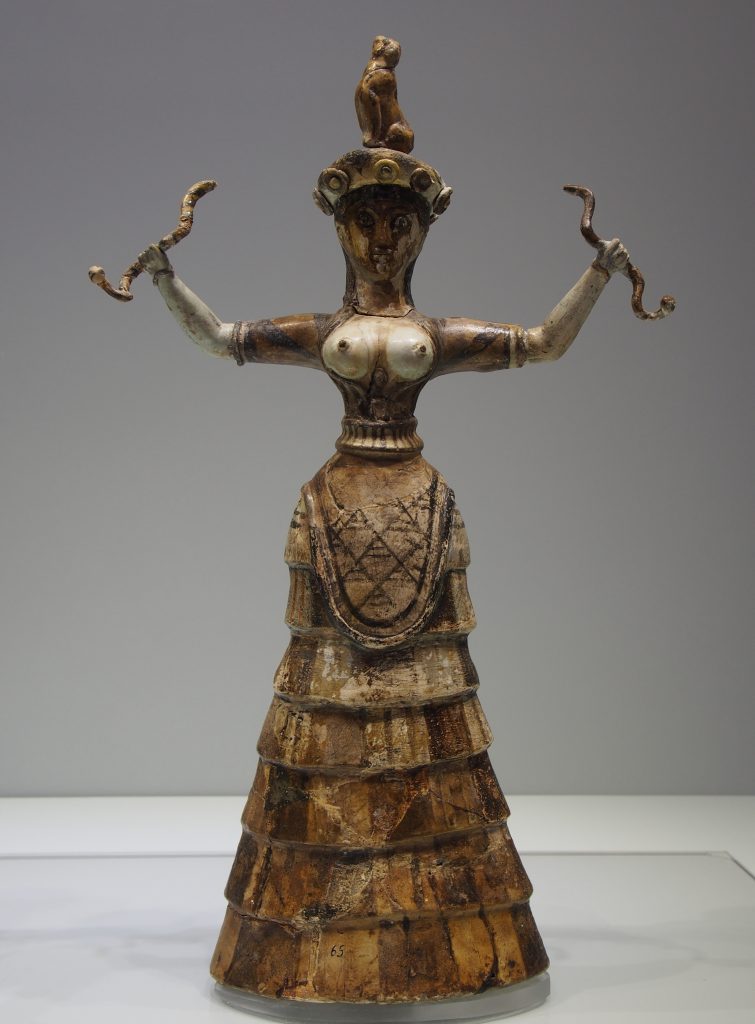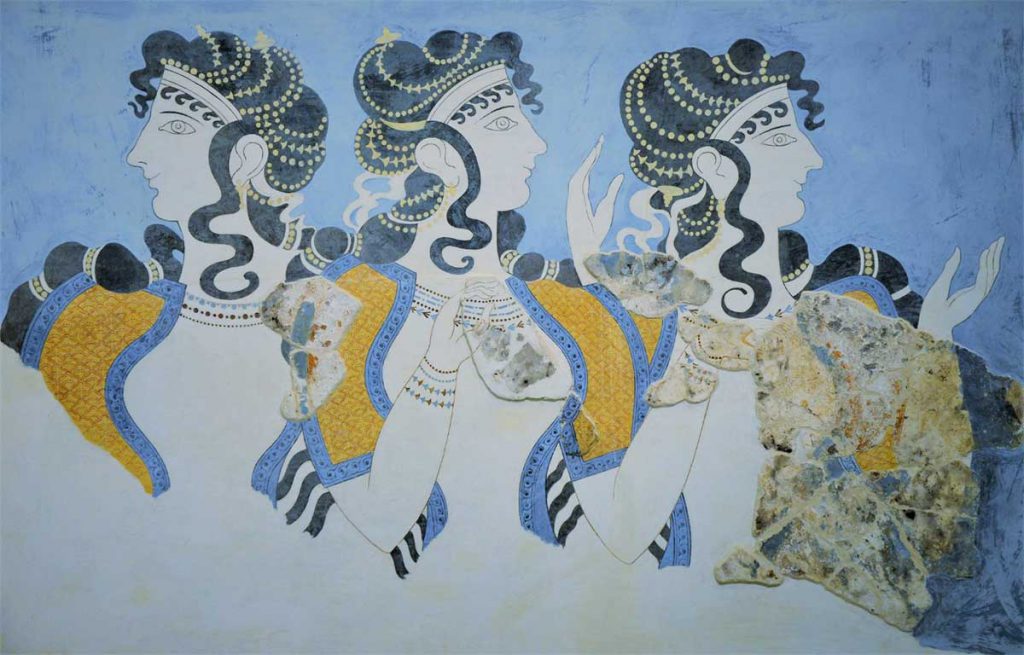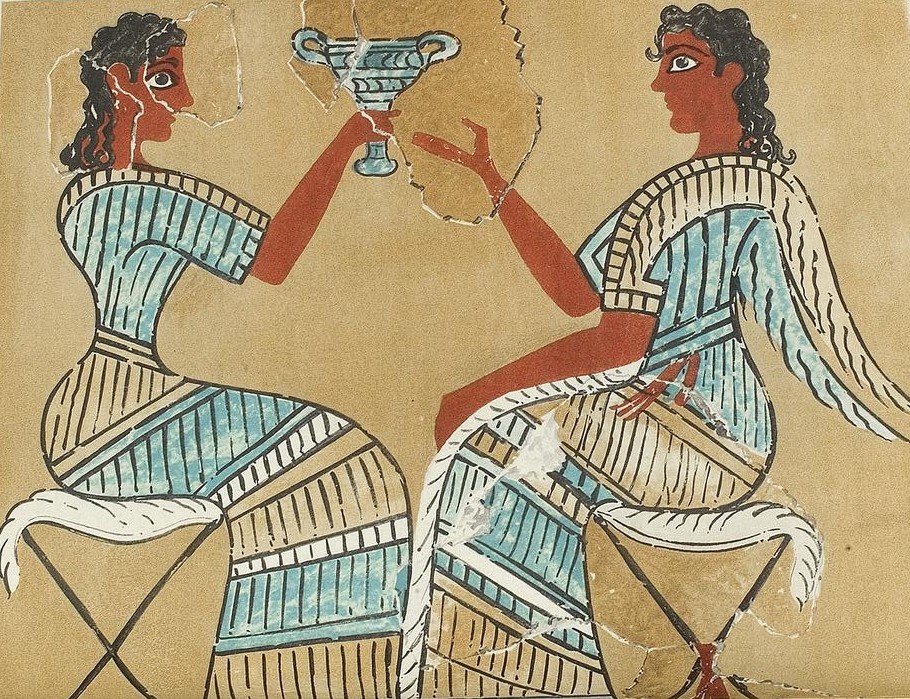Minoan Crete: The Women Rulers
In Minoan times, women had critical roles in society, holding positions of great power.
John G. Younger, Professor of Classics at The University of Kansas, is one of the several scholars who recognize the importance of the Minoan women in ancient Crete:
“Basically, this culture on Crete around 1600-1500 BCE is the closest candidate for a matriarchy that we have. That’s huge,” he noted. “In this culture, at this time, we have an awful lot of representations of what are obviously powerful women, single-seated women flanked by a bunch of guys.”
Younger studied Minoan artifacts unearthed on Crete to discover that women were usually portrayed in elaborate clothing on pottery and frescoes, while men wore significantly fewer garments (a loincloth and some accessories). They were also seated, signifying a position of power:
“In this culture, at this time, we have an awful lot of representations of what are obviously powerful women, single seated women flanked by a bunch of guys,” Younger said. “We don’t have a single representation of a seated man.”
Barbara A. Olsen, Associate Professor of Greek and Roman Studies at the Vassar College in New York and author of “Women in Mycenaean Greece: The Linear B Tablets from Pylos and Knossos,” suggests that Minoan women had more critical roles than child rearing:
“We see in Minoan iconography images of women in more public contexts: occupying prominent spacial positions in outdoor assemblies and processions, interacting with each other either in conversations or in dance, and acting in religious contexts either as individual worshipers or as officials involved in sacrificial rituals. Above all, emphasis is on the social rather than the biological, the public rather than the domestic.”
Among the iconographic representations of women from the Minoan era, two stand out: the Snake Goddess and the Ladies in Blue.
The Snake Goddess

The Snake Goddess or Snake Priestess from the Palace of Knossos. Heraklion Archaeological Museum. (Attribution CC BY-SA 4.0 C Messier via Wikipedia)
Sir Arthur Evans unearthed two faience figurines representing the Snake Goddess and possibly a Snake Priestess during the Knossos Palace in 1903. They date from the Neopalatial period of the Minoan civilization (circa 1750-1490 BC). The snake probably had a protective role during that time, symbolizing the household’s welfare and rebirth or the renewal of life (as the snake sheds its skin periodically, it was probably believed to be an immortal being). The Snake Goddess was also identified as a Household Goddess. Worshipers of the goddess most likely used the two faience figurines in rituals.
“Besides the ritual function, they are among the best examples of Minoan art with its dominant features — naturalism and grace. They are presented as the ladies of the palace court, dressed in typical Minoan clothes, with a long skirt (flounced, or with an apron) and a tight open bodice,” writes Dr. Alena Trckova-Flamee.
The garments worn by the Snake Goddess appear in other visual representations of Minoan women from that era.
Ladies in Blue

The Ladies in Blue are three portraits on a fresco discovered at the Palace of Knossos by Sir Arthur Evans and recreated by him to give an idea of how Minoan royalty probably dressed before the extinction of this mysterious civilization. The three ladies of the court wear lavish garments, jewelry, and elaborate hairstyles. The fresco is currently on display at the Heraklion Archaeological Museum.
“Despite its fragmentary condition, the wall painting transmits the sense of opulence and prosperity of the royal court while reflecting the coquetry of the ladies, who gesture displaying the richness of their jewelry,” the official site of the museum notes.
These are just some examples in art showing the importance women had in the Minoan civilization. Women ruled the land and the household, while men were fearless seafarers.





